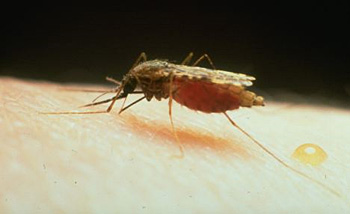
|  |  |  Editorials | Environmental Editorials | Environmental  
Mosquitoes That Carry Malaria Evolving Into New Species, Warn Scientists
 Daily Mail UK Daily Mail UK
go to original
October 26, 2010


| | The Anopheles gambiae mosquito which is the main carrier of malaria, pictured, is splitting into two species, scientist have discovered. |  |
Two strains of Africa's most notorious malaria mosquito are evolving into new species, research has shown.

The discovery has implications for combating malaria, since it means the insects could become immune to control strategies.

Scientists studied the mosquito Anopheles gambiae, which is chiefly responsible for spreading malaria in sub-Saharan Africa.

They found two strains were rapidly diverging in their genetic make-up, despite appearing physically identical.

Dr Maria Lawniczak, a member of the team from Imperial College London, said: 'From our new studies, we can see that mosquitoes are evolving more quickly than we thought and that unfortunately, strategies that might work against one strain of mosquito might not be effective against another.

'It's important to identify and monitor these hidden genetic changes in mosquitoes if we are to succeed in bringing malaria under control by targeting mosquitoes.'

Genetic differences between the two strains, known as M and S, were scattered throughout the insects' DNA, said the researchers, writing in the journal Science.

The changes had occurred in areas likely to affect development, feeding behaviour, and reproduction.

A further study comparing the two strains showed they seemed to be evolving differently.

This was thought to be in response to different environmental factors such as larval habitats, infectious agents and predators.

Co-author Professor George Christophides, also from Imperial College, said: 'Malaria is a deadly disease that affects millions of people across the world and amongst children in Africa, it causes one in every five deaths.

'We know that the best way to reduce the number of people who contract malaria is to control the mosquitoes that carry the disease.

'Our studies help us to understand the makeup of the mosquitoes that transmit malaria, so that we can find new ways of preventing them from infecting people.' |

 |
|  |



